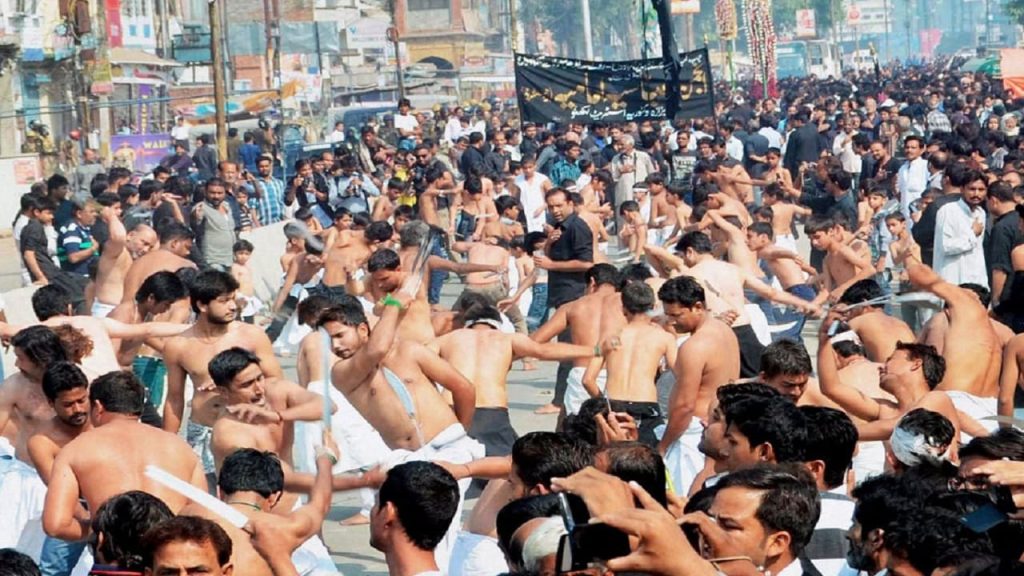- Private car and driver in Delhi / India
- +91-8447445445
- info@discoverindiabycar.com sugar.ankit@yahoo.com
 +91-9818434712
+91-9818434712
Muharram Festival
Muharram, commonly known as Muharram ul Haram, is the first month in the Islamic calendar. The fourth of the year’s four holy months, during which fighting is forbidden. It is regarded as the second-holiest month after Ramadan.
The tenth day of Muharram is when Ashura is celebrated. Shi’a Muslims mourn the tragedy that befell Usayn ibn Al’s family as a portion of Muharram, or as it is more commonly called, the Sorrow of Muharram.
Muharram and Ashura
Muharram connotes prohibition or forbiddance. It is claimed that before the rise of Islam, this month was called as Safer ul Awwal. When the new moon is visible, the Islamic New Year officially begins. The first month, Muharram, is one of the four holy months described in the Quran. The other three are the eleventh and twelfth months, Dhu al-Qidah and Dhu al-Hijjah, which come before Muharram, and Rajab, the seventh month. It is forbidden to wage war during these holy months. Prior to the coming of Islam, the Quraish and Arabs likewise forbade combat at some seasons.

Before Islam, the Arabs observed a day of fasting on the tenth of Muharram. Two other Semitic religions, Judaism and Christianity, both viewed this day as significant. Before and after coming to Medina, Muhammad fasted on this day multiple times. He also instructed the Muslims to fast on the ninth and eleventh days. Nonetheless, fasting was optional until after Ramadan, when it was made mandatory. According to Abu Huraira, the Prophet Muhammad is alleged to have declared, “The most righteous fasting following the month of Ramadan is (in) Allah’s month Al-Muharram.
Muharram and Ashura to the Muslims
Shia Muslim youngsters ride camels in front of the Azakhana in Amroha, India, as part of a parade honouring the events on and after Day of Ashura. The Arabic word for Ashura, which literally translates as “the Tenth,” designates the tenth day of Muharram.
Sunni Muslims assert that the custom of fasting on Ashura, the tenth day of the Islamic month of Muharram, was started by Muhammad in the early days of Islam as a way to remember Moses’s crossing of the Red Sea.

In Shia Islam, Muharram is a month of commemoration. Ashura is well-known in Shia tradition due to its historical significance and celebration of the Shahadat of Muhammad’s grandson, Usayn ibn Ali. The time of mourning for Shia Muslims starts on the first night of Muharram and lasts for 10 nights, peaking on Ashura Day, which falls on the tenth day of Muharram. The days preceding and including the Day of Ashura are the most significant because it was during these days that Yazid I’s army, acting on Yazid’s orders, killed Hussain and 72 of his followers at the Battle of Karbala on the 10th, along with Hussain, his family, and his followers (including women, children, and elderly people), beginning on the 7th. The remaining members of Husayn’s family and supporters were abducted, taken to Damascus, and imprisoned there.
The season for Muharram
Hijri years 1343 to 1500 converted to the Gregorian calendar; the first days of al-Muharram (brown), Ramadan (grey), and Shawwal (black), as well as Eid al-Adha, are bolded. In the SVG file, mouse over a location to reveal its dates and a line to reveal the month. When the first crescent of a new moon is visible, the month begins according to the lunar Islamic calendar. The Islamic lunar calendar year is 11–12 days shorter than the solar year, hence Muharram shifts around the solar years.








